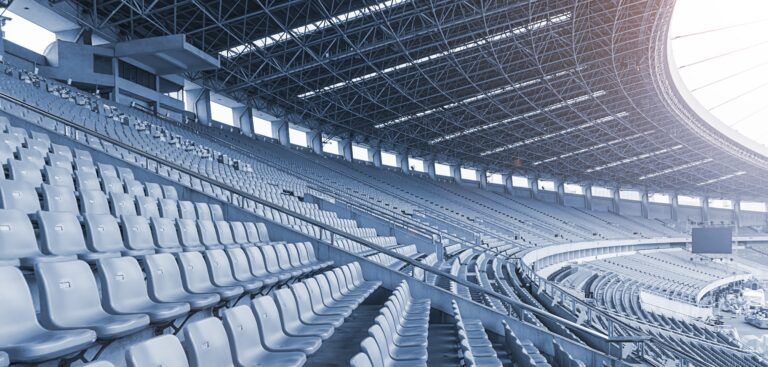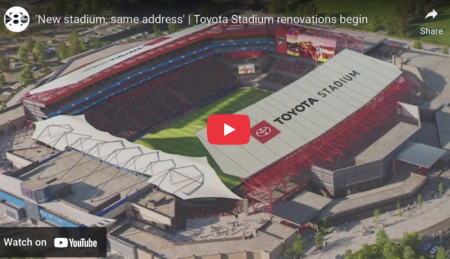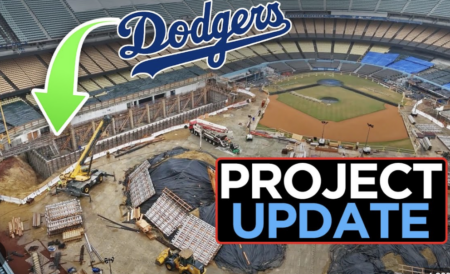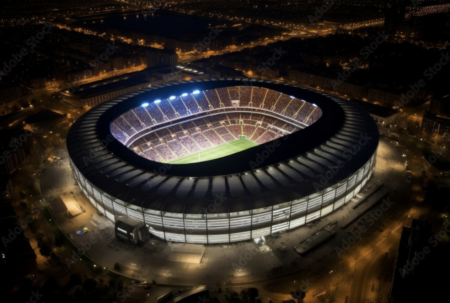During these unparalleled times, people around the globe are restraining their normal daily routines in order to slow down the spread of the Coronavirus. State and local governments have made the difficult decision to shut down businesses, and sports leagues around the globe have halted all future games indefinitely. While it may appear that society is on pause, the enforced government shutdown presents the opportunity to carry out renovations, refurbishments, and other improvements for all types of sports facilities.
Though it is impossible to predict when life will resume to normalcy, constructors, contractors, builders and manufacturers alike must prepare the industry for the inevitable bounce-back of society. Whether this means creating new spaces or refurbishing an existing sports stadium, investing in these projects before they are reoccupied is a wise call to action.
No spectators? No problem. The harsh reality is that fans will not be lined up for months on end to see their favorite sports team. What does this mean? A lot more time and space for renovations to be carried out without interruptions along the way. However, that is not to say that carrying out such a project will be a flawless process.
With a global pandemic at our fingertips, lockdowns and shutdowns have also impacted suppliers’ and manufacturers’ ability to ship products and materials for these projects to happen.
Several manufacturers and construction companies have materials on hand for projects and products in the works, and some importers even may have stockpiles of materials to hold them afloat for a few months. However, a prolonged pandemic, in combination with a lack of material goods, may present an issue that cannot be easily resolved. Materials coming in from China, for example, may need to be placed on hold until the country’s own import
and export restrictions are lifted. Fortunately, the beginning stages of a renovation project are low-impact stages in the whole process. The government shutdown and stay-at-home order has called for many employees to shift from traditional in-person work to remote work—meaning a lot of the planning stages can be kick-started while working from home.
For facilities looking to renovate during the pandemic, now is a great time to carry out such a project as it is likely that owners will get the best bang for their buck. Contractors are eager to work, and because of the slow down, people are much more willing to negotiate and make a deal. With these renovations, and the global COVID-19 pandemic, stadium design is bound to see some changes along the way. Though it might be difficult to convince stadium owners to reduce the number of seats within a sporting facility, as this is the largest money maker, social distancing will presumably affect the seating arrangement to a certain extent. At present, VIP or premium seating in stadiums are much larger in terms of width, offer increased comfort, and have more room between seats.
Because of this arrangement, which presents a solution to overcrowding, owners might be more inclined to increase the number of premium seats to accommodate this evolving need to be distanced from one’s neighboring peers. As the driving factor when it comes to seat selection, the superior comfort features from wider and more luxurious seats will likely make their way to the other levels of the stadium—offering a wider selection of upgrades when it comes to seating.
Since the inception of sports stadiums, seating has always been one of the most critical components for both the fan experience and the facility. The pandemic is unlikely to change that. Similar to the theatre industry, fan-expectation continues to evolve and it is up to the venue to live up to those expectations. The global pandemic will surely alter the way people feel about being in close quarters with others, which is why it is so imperative to begin implementing those changes now. Whether our own restrictions are lifted a month from now, or three months from now, people want to be prepared for the new era of stadium design and the fan experience.





